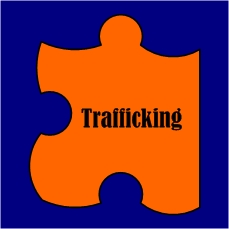Foster Care’s Link to Sex Trafficking

At the end of July 2013, 105 children were rescued from a nationwide FBI sex-trafficking sting.
“The three-day sweep of 76 cities focused on underage victims of prostitution. The FBI said 105 teens — nearly all of them girls — were rescued, and 150 people suspected of being pimps were arrested.
The largest raid was in the San Francisco area, where officers said they rescued 12 juveniles and arrested 17 pimps. In the Los Angeles area, two juveniles were recovered and three people arrested.
The raids, carried out by nearly 4,000 local, state and federal officers, brought renewed attention to the vulnerabilities of foster children, who are disproportionately targeted and recruited by child sex traffickers, sometimes right out of the foster care system.
According to the National Center for Missing and Exploited Children, the information clearinghouse that tracks missing child reports in the United States, 60% of runaways who are victims of sex trafficking had been in the custody of social services or in foster care.
The center assisted the FBI in the weekend raids, part of the agencies’ Innocence Lost Initiative that the FBI says has rescued more than 2,700 sexually exploited children since 2003.
“We are finding a very disturbing trend,” John Ryan, the center’s chief executive, said at a news conference at FBI headquarters. “They leave foster care and they literally fall off the radar. That’s something that needs to be addressed.”
The circumstances that put minors into foster care are often what make them especially vulnerable to sex trafficking, said Staca Shehan, director of the center’s case analysis division.
“These kids are usually without an involved parent,” she said in a telephone interview. “Pimps can come into their life and initially take on the role of protector.”
Without families to work on their behalf, Shehan added, it is more difficult to rescue foster youths from sex trafficking and keep them out of the cycle. Victims of sex trafficking might be returned to a group home only to begin recruiting their friends into the sex trade, she said.
That is the concern of CAS Research and Education, a Sacramento-based nonprofit group that combats human trafficking. The organization was spun out of California Against Slavery, co-sponsor of Proposition 35, the anti-sex-trafficking measure California voters passed in November.
Half of sexually trafficked minors in California come from the foster care system. By comparison, fewer than 1% of all children in California are foster children.
The Sacramento group is one of several in the state working to find families that will adopt youths who have been rescued from sex trafficking or are vulnerable to being recruited.
Changing vulnerabilities inherent in the foster care system is difficult, said Rosario Dowling, program director for the Sacramento group’s northern district. “We need to recruit healthy, specialized, viable families” to give the children a place to belong, she said.
Sex-trafficking sting highlights vulnerability of foster children
[Los Angeles Times 7/29/13 by Alexei Koseff]
Foster Care Failures
We covered a Florida failed case two weeks ago at Kristi House.
HR 1732 Strengthening the Child Welfare Response to Trafficking Act
See the bill here.
“I consider these kids in foster care some of the most at-risk in our nation,” said Bob Lowery, executive director of the National Center for Missing and Exploited Children, which worked with the FBI on the raids in 76 cities.
Many of the children, almost all of them girls, will re-enter foster care.
It’s part of the constant shuffling that lays the groundwork for their exploitation. For some, their self-worth becomes so battered that they see themselves as commodities, children others are paid to warehouse. “Trauma bonding” with their abusers will cause some to run away again, Lowery said.
Citing FBI data, Lowery said children who are trafficked into the sex trade are usually dead within seven years.
From US News, “in Congress there is bipartisan legislation that can help to fill this void. The Strengthening the Child Welfare Response to Trafficking Act directs the Department of Health and Human Services to create guidelines that assist child welfare agencies. Agencies would be required to report missing or abducted children to law enforcement within 72 hours. HHS would also report to Congress on the prevalence of trafficking among foster youth and make recommendations for both supporting and monitoring local efforts to curb child sex trafficking.””
H.R. 1732, For Our Foster Care Children
[The Topeka Capitol Journal 8/5/13]
REFORM Puzzle Piece


Recent Comments